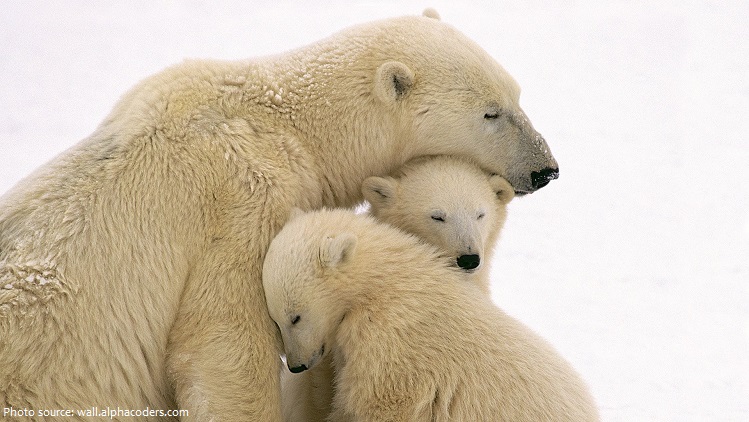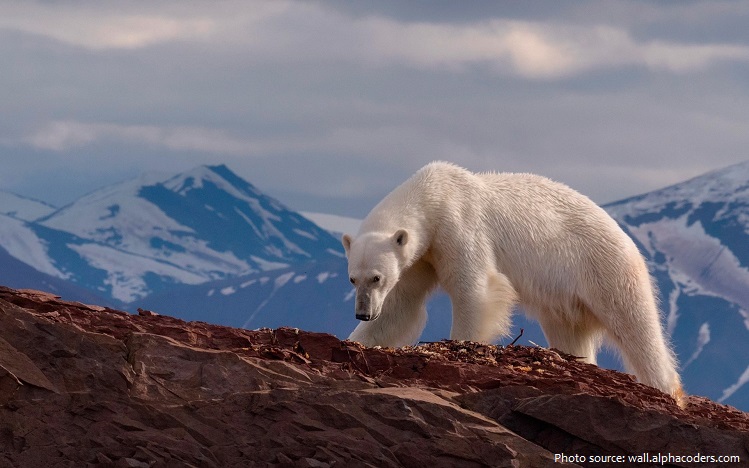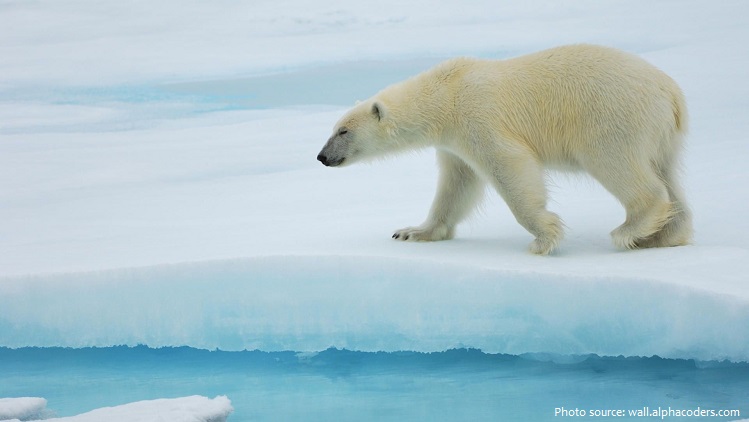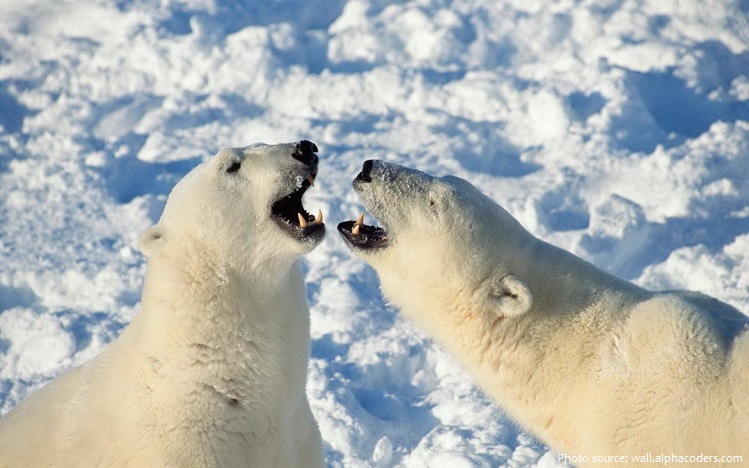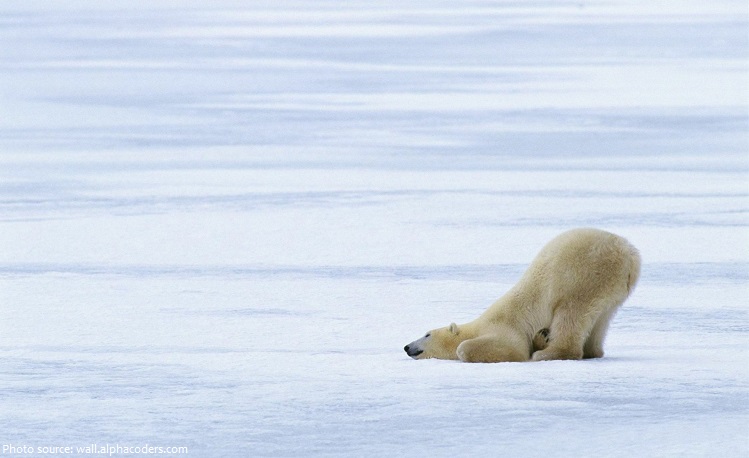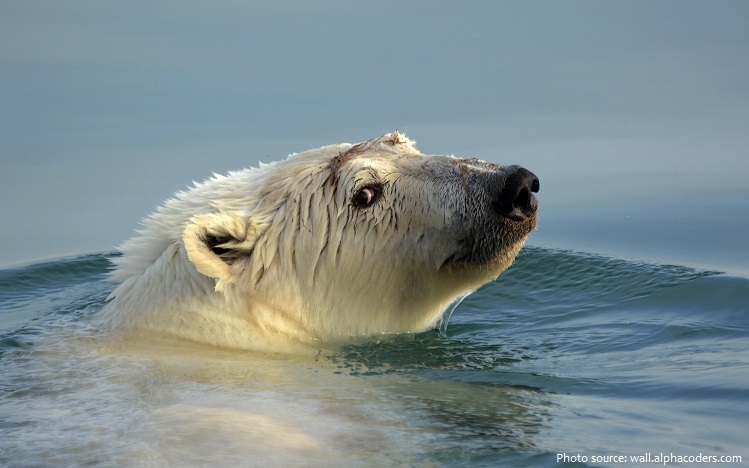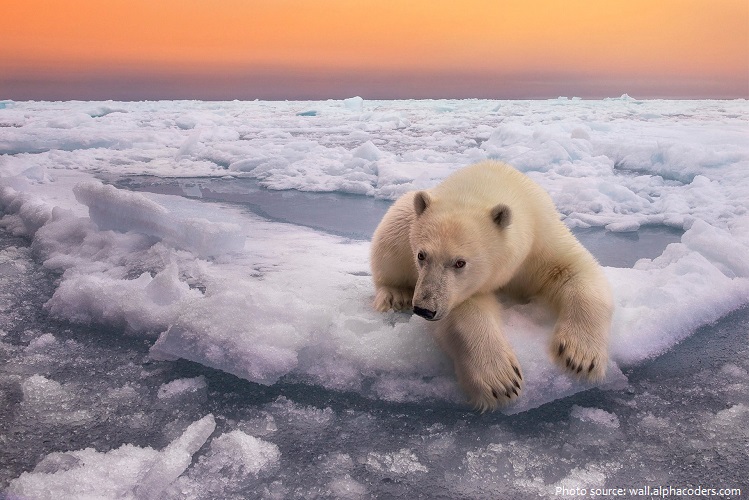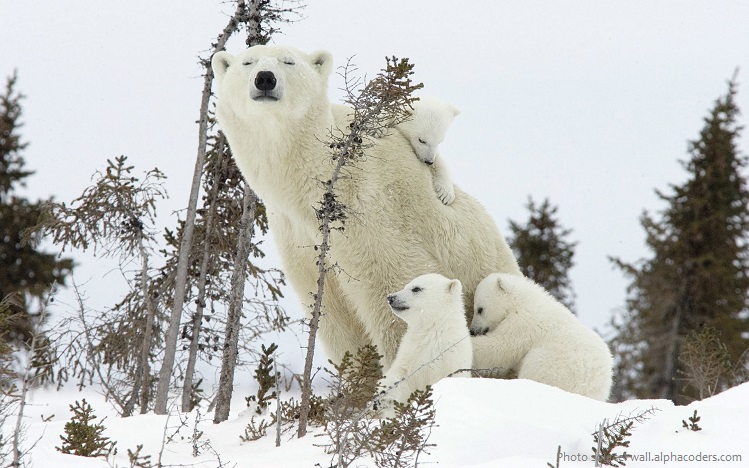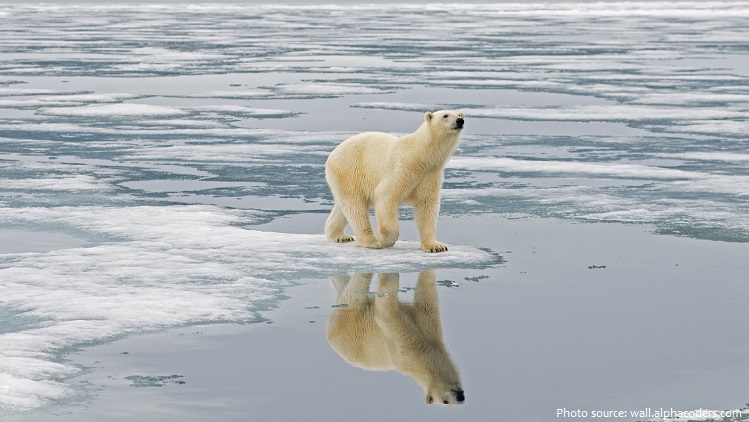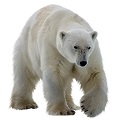Polar bears live in the Arctic.
Their preferred habitat is the pack ice of the Arctic Ocean.
The ice edge and pressure ridges where fractures and refreezing occur provide the best hunting ground.
Bears will travel as much as 1,000 kilometers (620 miles) north and south, as the ice melts and freezes.
In areas where the sea ice melts completely, polar bears must move ashore in the summer. They may scavenge to avoid starving, or they may fast until ice forms again. In some places, these bears have learned to eat at garbage dumps.
Polar bears typically live between 15 to 18 years in the wild. The oldest known polar bear in the Arctic lived 32 years.
The world’s oldest polar bear, orphaned as a cub in the cold Russian north and raised in captivity, has died aged 42.
Polar bears are the world’s largest terrestrial carnivore.
Male polar bears weigh about 350 to more than 650 kg (770 to 1,435 lb) and are about 2.5 to 3 m (8.2 to 9.8 ft) long.
Female polar bears weigh about 150 to 250 kg (330 to 550 lb) and are about 1.8 to 2.5 m (6 to 8.2 ft) long. Pregnant females can weigh as much as 500 kg (1,100 lb).
Polar bears are stocky, with a long neck, relatively small head, short, rounded ears, and a short tail.
Although polar bears appear white to the eye, their fur is actually transparent. It only appears white, because it reflects visible light. Under their fur, polar bear skin is actually black. Under the skin is a layer of insulating fat.
They have a mouth full of 42 extremely sharp teeth.
Polar Bears have an excellent sense of smell. They can detect their prey from 32 km (20 mi) away and can smell a seal’s breathing hole in the ice more than 800 meters (0.5 mile) away.
Polar bears are solitary and overwhelmingly carnivorous, feeding especially on the ringed seal but also on the bearded seal and other pinnipeds. They also scavenge on carcasses of beluga whales, walruses, narwhals, and bowhead whales. On occasion, polar bears kill beluga whales and young walruses.
If a polar bear doesn’t eat for seven to ten days, it can slow its metabolism until it finds its next meal.
They like to keep themselves clean. After feeding polar bears usually wash by taking a swim or rolling in the snow.
The broad feet have hairy soles to protect and insulate as well as to facilitate movement across ice, as does the small bumps on the soles of the feet (called papillae), which helps to prevent slipping.
Strong, sharp claws are also important for gaining traction, for digging through ice, and for killing prey.
Built to stay warm in their cold habitat, polar bears sometimes overheat and have to cool off in the chilly water.
Polar bears are excellent swimmers. They can comfortably swim at a speed of 10 kilometer (6 miles) per hour. They can swim for up to 160 kilometer (100 miles).
Polar bears can see well underwater, spotting potential meals 4.5 meters (15 feet) away. They have a nictitating membrane, or third eyelid, that allows them to see underwater and protects their eyes in blowing snow.
Polar bears can reach speeds up to 40 kilometer (25 miles) per hour on land.
When not hunting, polar bears are resting, perhaps as much as 20 hours a day.
Unlike brown bears and black bears, polar bears do not hibernate, and only pregnant females over-winter in dens.
Female polar bears would rather build their dens in “old snow“ from previous years rather than the freshly fallen snow.
Mating take place on the sea ice in April and May, when polar bears congregate in the best seal hunting areas. The total gestation period is 195 – 265 days .
Polar bear cubs (one to four, usually two) are born November through January in a den. Mother and cubs emerge from their den in late March or April.
Female poplar bears typically nurse their cubs for two and a half years.
Polar bear cubs learn to freeze and remain still while their mother hunts. If they move, the mother disciples them, with a whack to the head.
Polar bear has no natural predators and knows no fear of humans, making it an extremely dangerous animal.
Scientists today use a working estimate of around 22,000 to 31,000 polar bears still exist today worldwide.
The biggest threat to polar bears today is not hunting but the effects of global warming and pollution.
Because of expected habitat loss caused by climate change, the polar bear is classified as a vulnerable species.
Although most polar bears are born on land, they spend most of their time on the sea ice. Their scientific name Ursus maritimus means “maritime bear” and derives from this fact.
The polar bear is the newest of the eight bear species.
All polar bears alive today can trace their ancestry back to one female brown bear who lived in Ireland around 20,000 to 50,000 years ago.
Residents of Churchill, Canada, leave their cars unlocked to offer an escape for pedestrians who might encounter polar bears.
If you eat a polar bear liver, you’ll die. Humans can’t handle that much vitamin A.
The polar bear was the mascot for the 1998 Winter Olympics in Calgary, Canada.
